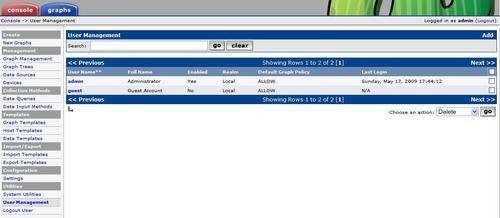If you click on User Management under Utilities, the User Management console will open. It will look more or less like the following:

By default, Cacti comes with two users. One is admin and another is guest. The admin user has complete access to the Cacti system. The guest user only has view access by default and is an unauthenticated user. This unauthenticated user can only visit graph_view.php and view graphs by default, but can not change graphs. It is best practice to disable access for unauthenticated users in a production environment. By default, in version 0.8.7 and later, the guest user is disabled.



